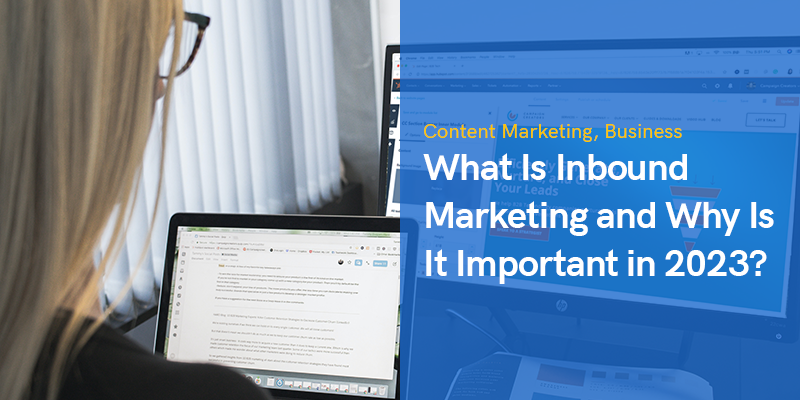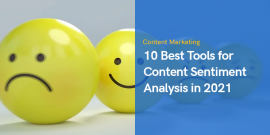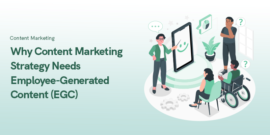
What Is Inbound Marketing and Why Is It Important in 2023?
Understanding what Inbound Marketing is in the context of your business strategies is essential for those seeking to boost their online presence.
Considered one of the key strategies for attracting new customers, Inbound Marketing is an option that has been growing in significance in recent years. Overlooking it means that all your company's good work may get lost amid the countless messages that consumers receive every day.
What is Inbound Marketing?
Also known as “attraction marketing”, inbound marketing aims to actively attract and conquer a brand’s target audience and qualified leads, whether through search engines such as Google, or on social networks. This does not involve carrying out actions aimed at the general public, as was once traditional. Instead, Inbound Marketing focuses its efforts on attracting the right people only.
This approach differs from pure advertising. Firstly, your company needs to become relevant in a certain topic in order to attract the attention of consumers and converse with them, with conversion as the ultimate goal.
The strategy combines the creation of thought-provoking, relevant content with marketing automation, which makes the entire process more efficient. This methodology is based on four main actions:
- Attract visitor traffic;
- Convert visitors into leads;
- Turn leads into customers;
- Persuade customers to promote your brand themselves.
Seems like a lot, right? Don’t worry, a free flowchart maker can help you make sense of inbound flow, and simplify any process by developing a visual guide.
The Main Differences Between Inbound Marketing and Outbound Marketing
Outbound Marketing is, effectively, a more intrusive version of advertising – not to mention the oldest marketing method around.
Outbound involves purchased email lists, spam, radio and television ads, websites and printed materials, telemarketing calls, sales stands and billboards, among other formats. Communication is one-way: the brand sends its news to a wide audience, without establishing a dialogue.
As a result, consumers become “passive” when faced with Outbound Marketing, which has the following characteristics:
Diffuse audience
a billboard or a television advertisement reaches all kinds of people. Outbound Marketing is unable to narrow down its target audience;
One-way communication
the brand is communicating with consumers, who receive the information passively;
No engagement
consumers cannot repost, share or like Outbound communications;
Improbable metrics
it is practically impossible to measure the reach of Outbound Marketing techniques;
No relationship-building
brand and customers do not exchange information or content. The relationship is founded exclusively on purchases;
High costs
because they are designed to reach a large, unfocused cross section of the population, Outbound Marketing actions are expensive;
Intrusive
telemarketing calls interrupt people’s routines; TV ads interrupt programs. And in many cases, consumers don’t pay attention to these interruptions;
Short-term
website banners, television ads and spam emails have a limited shelf-life – unlike an evergreen blog post, which can be occasionally updated to generate more and more traffic to your site over time.
The opposite is true of Inbound Marketing, which reaches potential customers via the production of rich, relevant content. These techniques build trust and relationships with your target audiences.
Inbound Marketing is characterised by the following:
- Right audience: using SEO techniques and keywords, brands can make their content accessible to people who are genuinely interested in their product or service;
- Two-way communication: thanks to social networks, audiences can ask questions and initiate discussions, and brands can respond promptly, thus establishing communication;
- Engagement: well-made content will grow in popularity, and be shared over social networks. Brand engagement is entirely dependent on the quality of the content being produced;
- Easy to measure: Inbound Marketing relies on online tools that allow brands to understand the performance and potential of each action, making their ongoing and future strategies more efficient;
- Relationship between brand and customer: brands can get closer to their audiences based on relevant posts, while consumers in turn can become mouthpieces, promoting and recommending brands to their peers;
- Affordable: Customer Acquisition Cost drops considerably if Inbound Marketing techniques are used correctly – even more so when marketing automation software is deployed;
- Attraction, not interruption: the ability to attract your audience, and involve them in the product-choosing process, is among the main strengths of Inbound Marketing. And considering the amount of online users, the sky's the limit in terms of growth;
- Long-term: a blog post can last a long time, especially once it’s been updated and made SEO-ready.
Why Should Your Company Use Inbound Marketing?
Inbound Marketing should not be used on its own, but rather as a subsection of your company's activities for attracting and retaining new customers. Doing so will increase your understanding of consumers’ needs, and ability to offer them relevant solutions.
Be discovered by the people who require your service
search engines are key participants in Inbound Marketing strategies. Producing information that answers users' questions will increase the odds of it being found online by those who need it most.
The more appropriate the content, the greater the chances your site will appear in the top search engine positions. This form of open communication is one of the best ways to increase engagement and establish lasting relationships between your company's communication channels and the general public.
Establish a healthy dialogue with your customers
when we are faced with an advertisement, we tend to evaluate it with some reservations, regardless of the subject in question. We assume that the company will not disclose any weaknesses or negative aspects related to the product or service in question.
On the other hand, when we look for information about a certain topic, we pay more attention to content that solves our issues, and allows us to add value to products and services which we are already familiar with. And this content is offered for free!
Increase your business conversion rates
attraction marketing is not just about attracting customers. From the moment they arrive on your page or on your social network channels, they are expected to react: by clicking on a link, liking, commenting or sharing the content in question, for example.
Many companies aim to build a database and frequently send news to their customers. Others expect to be able to accompany potential customers, and appear as the first purchase option when required.
A good Inbound Marketing strategy allows your company to do all of the above: attract more customers, increase relevance and boost conversions – i.e. increase the number of registered users or sales. All this thanks to quality content that makes a difference in the daily lives of your users.
These strategies are carried out using integrated actions and techniques – like SEO, blogs, social media, email marketing, landing pages and more – and are monitored by a series of tools, so that tactics can be constantly updated and improved.
Digital transformation and radical changes in consumer behaviour have changed the rules of the game forever. Companies need to create new ways to attract and retain customers, and Inbound Marketing is more successful than most. That is why it is so important to know what Inbound Marketing is, and why it’s important for businesses.
Recommended Posts

10 Best Tools for Content Sentiment Analysis in 2023
April 29, 2024


